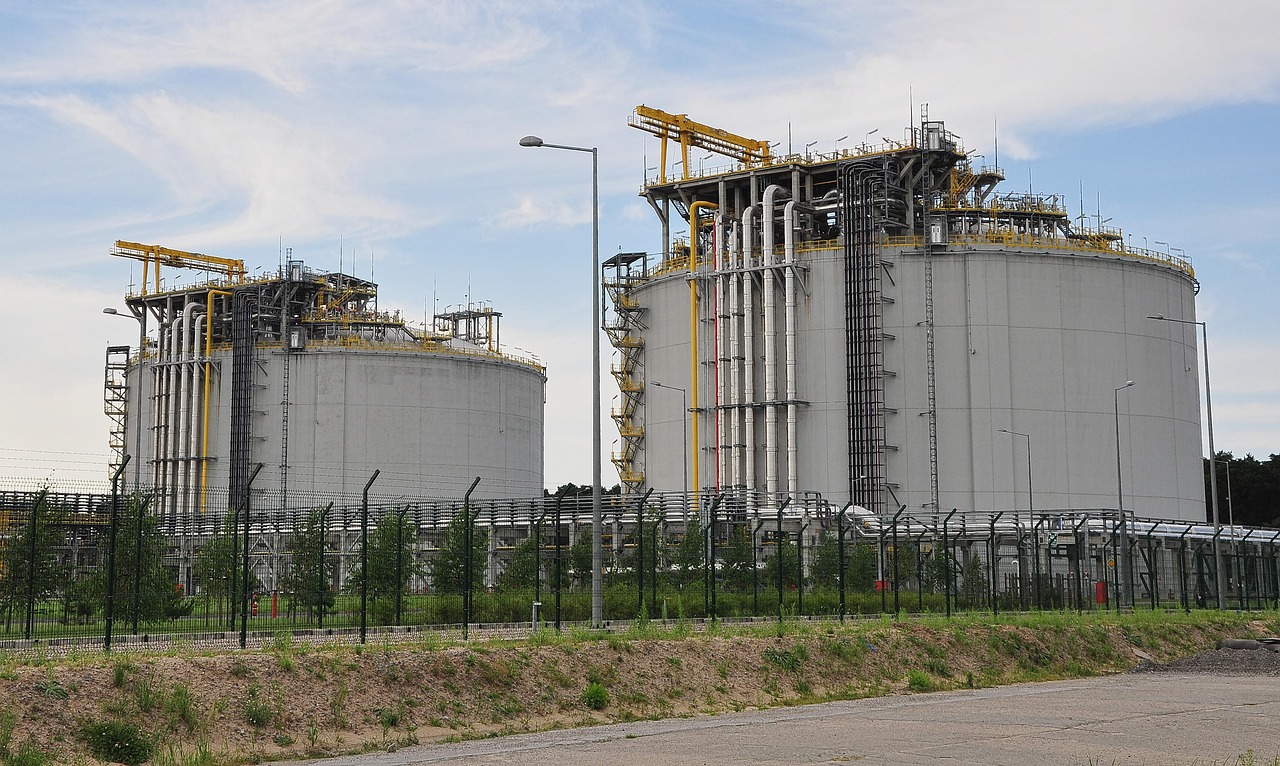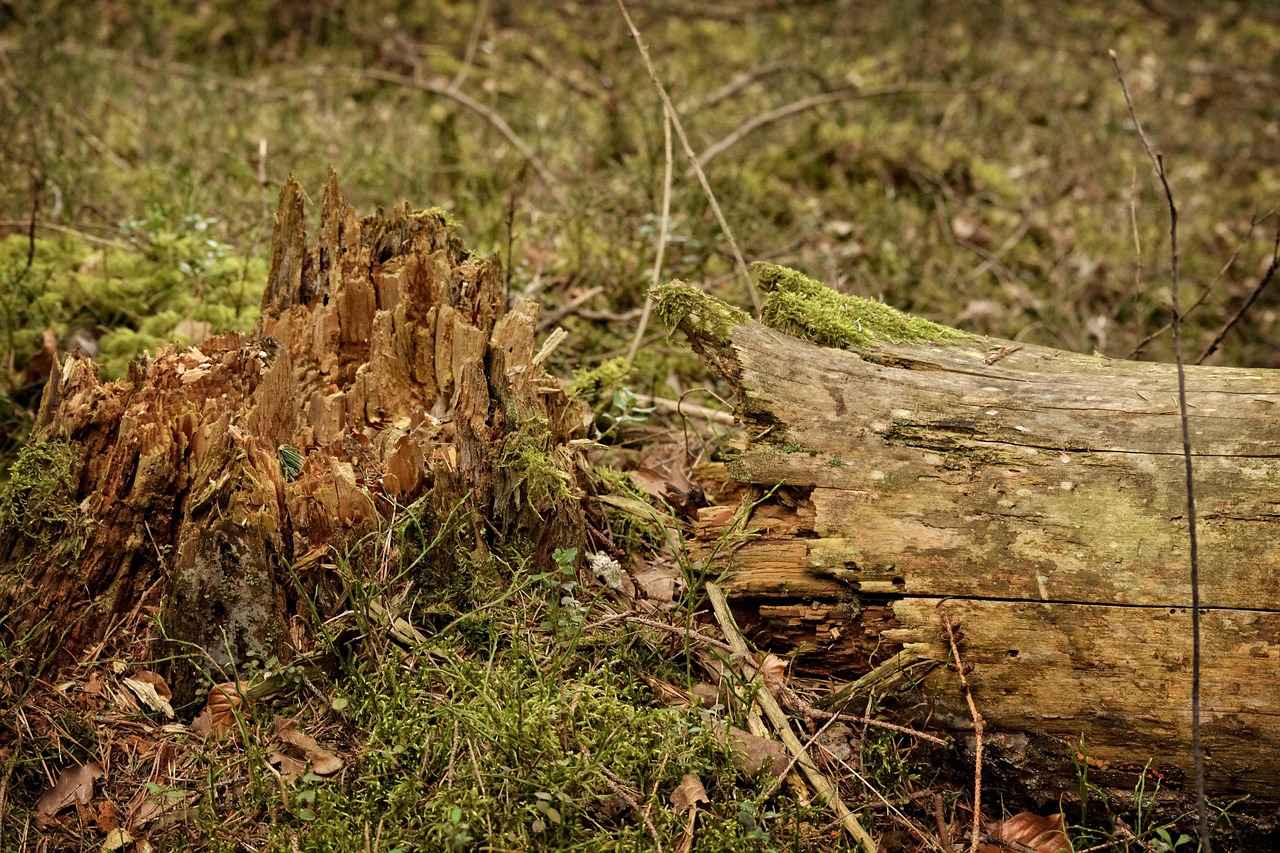This article provides practical tips and techniques for effectively cleaning a rusty gas tank, ensuring optimal performance and longevity of your vehicle. Learn how to restore your gas tank safely and efficiently.
Why Should You Clean a Rusty Gas Tank?
Understanding the importance of cleaning a rusty gas tank is crucial for vehicle maintenance. Rust can lead to fuel contamination, engine issues, and costly repairs if left untreated. By keeping your gas tank clean, you can enhance fuel efficiency and prolong the life of your vehicle.
What Tools and Materials Do You Need?
Before starting the cleaning process, gather all necessary tools and materials. This ensures a smooth restoration process and minimizes interruptions during the task.
- Essential Tools for Gas Tank Cleaning: Common tools include wrenches, brushes, and protective gear to ensure safety during the process.
- Safety Gear: Why Is It Important? Wearing safety gear protects you from harmful chemicals and sharp edges. Essential items include gloves, goggles, and a mask to prevent inhalation of fumes.
- Cleaning Solutions: Which Ones Work Best? Choosing the right cleaning solutions can significantly enhance your results. Options like vinegar, baking soda, or commercial rust removers are popular and effective.
Preparation Steps Before Cleaning
Proper preparation is crucial for a successful cleaning process. This includes draining the tank, removing it from the vehicle, and inspecting it for damage. Ensure you have a safe workspace and all necessary tools at hand.
How to Clean the Rust from the Gas Tank?
The cleaning process involves several steps to effectively remove rust and debris. Following a systematic approach can yield the best results for your gas tank.
Step-by-Step Cleaning Process:1. Soak the tank with your chosen solution.2. Scrub the interior thoroughly with a brush.3. Rinse the tank with water to remove any residue.4. Allow the tank to dry completely before reinstallation.
Post-Cleaning Inspection: What to Look For?
After cleaning, inspect the gas tank for any remaining rust or damage. Identifying issues early can prevent future complications and ensure a reliable fuel system. Look for signs of leaks or pitting that may require further attention.
How to Prevent Future Rust Buildup?
Preventing rust buildup is essential for maintaining a clean gas tank. Implementing proper storage and regular maintenance practices can significantly reduce rust formation.
- Storage Tips for Gas Tanks: Proper storage conditions help minimize rust formation. Keep your gas tank in a dry, ventilated area and avoid exposure to moisture whenever possible.
- Regular Maintenance Practices: Routine maintenance, such as fuel system cleaning and inspections, can help prevent rust and ensure your gas tank remains in optimal condition for years to come.
In conclusion, cleaning a rusty gas tank is a manageable DIY task that can save you from costly repairs and improve your vehicle’s performance. By following these tips and techniques, you can effectively restore your gas tank and keep it in excellent condition.
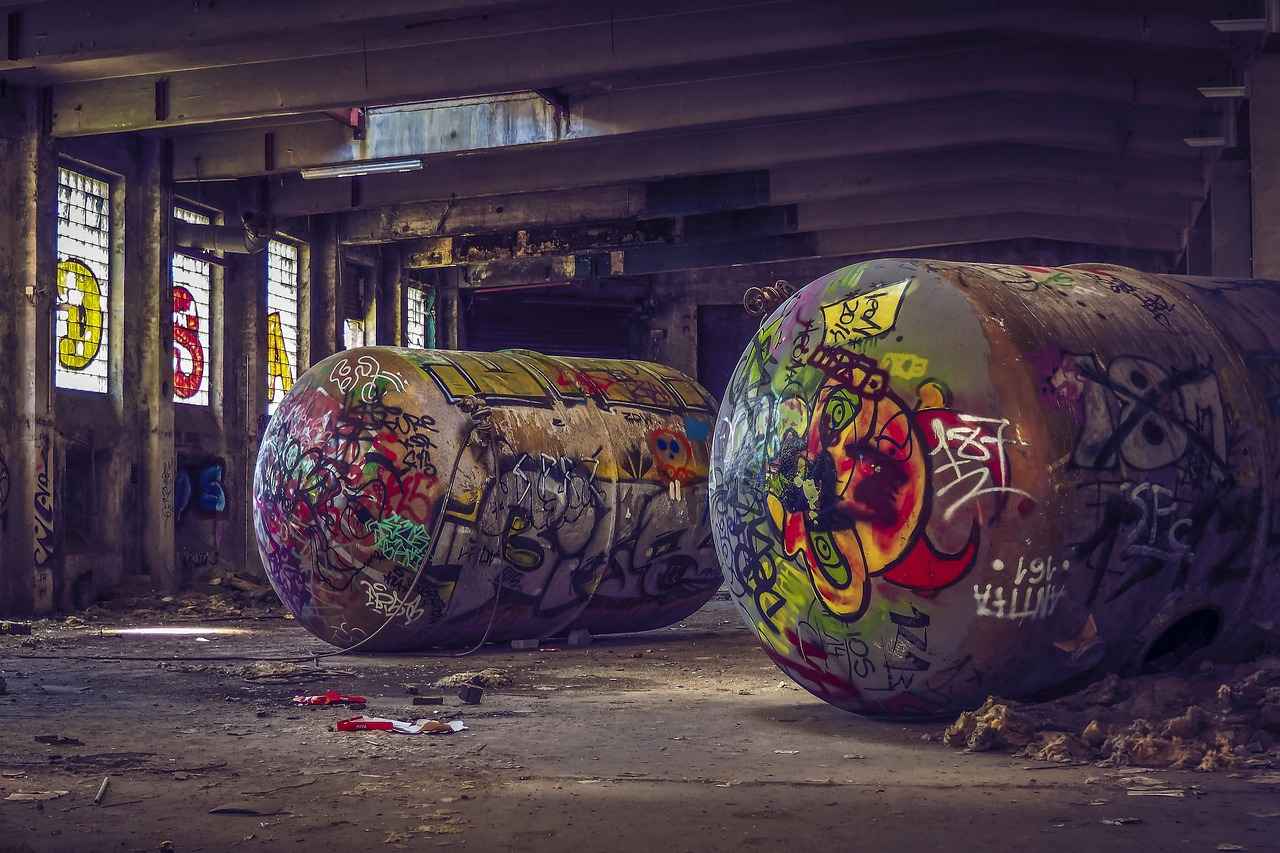
Why Should You Clean a Rusty Gas Tank?
Cleaning a rusty gas tank is not just an optional chore; it is a vital aspect of vehicle maintenance that should not be overlooked. Over time, rust accumulation can lead to severe issues that affect both the performance of your vehicle and your overall safety on the road. Understanding the consequences of neglecting a rusty gas tank can motivate you to take action sooner rather than later.
Fuel Contamination: The Hidden Danger
One of the primary reasons to clean your rusty gas tank is to prevent fuel contamination. Rust particles can break off and mix with the fuel, leading to clogged fuel filters and injectors. This can cause your engine to run poorly, misfire, or even stall unexpectedly. The longer you wait to address this issue, the more extensive the damage can become, potentially resulting in costly repairs.
Engine Issues: A Ripple Effect
When rust contaminates the fuel, it can also lead to a range of engine issues. As the fuel system becomes compromised, the engine may struggle to receive the necessary fuel supply, causing it to run inefficiently. Over time, this can lead to a decrease in fuel economy and performance, ultimately affecting your driving experience. Ignoring rust in your gas tank can lead to a domino effect of mechanical failures that could have been avoided with timely cleaning.
Costly Repairs: A Preventable Expense
Addressing rust damage early can save you from incurring expensive repair bills down the line. A clean gas tank can significantly reduce the risk of engine failure and the need for extensive repairs. In contrast, allowing rust to fester can lead to a complete fuel system overhaul, which can be a daunting financial burden. Investing time and effort into cleaning your gas tank can pay off in the long run.
Safety Concerns: Don’t Take Risks
Beyond mechanical issues, a rusty gas tank poses safety risks. Fuel leaks caused by rust can lead to fire hazards, endangering both the driver and passengers. Keeping your gas tank clean and rust-free is essential for ensuring a safe driving environment. By taking proactive measures, you can significantly reduce the chances of accidents caused by fuel system failures.
Environmental Impact: A Broader Perspective
Cleaning your gas tank also has environmental implications. Rust particles and fuel leaks can contaminate soil and water sources, contributing to pollution. By maintaining your gas tank, you are not only protecting your vehicle but also playing a part in preserving the environment. Responsible vehicle maintenance is crucial in minimizing your ecological footprint.
Conclusion
In summary, the importance of cleaning a rusty gas tank cannot be overstated. From preventing fuel contamination and engine issues to avoiding costly repairs and ensuring safety, the benefits are clear. Regular maintenance and timely cleaning can enhance your vehicle’s performance, longevity, and safety. Make it a priority to keep your gas tank in optimal condition for a smoother, more reliable driving experience.

What Tools and Materials Do You Need?
When embarking on the task of cleaning a rusty gas tank, preparation is key to ensuring a successful outcome. The right tools and materials not only facilitate the cleaning process but also enhance safety and efficiency. This section will guide you through the essential items you need to gather before starting your restoration project.
Before diving into the cleaning process, it is crucial to assemble all necessary tools and materials. This proactive approach helps in achieving a smooth restoration process and minimizes interruptions during the task. Below is a comprehensive list of the items you should consider:
- Wrenches and Socket Sets: These are essential for removing the gas tank from your vehicle. Make sure to have various sizes to accommodate different bolts.
- Brushes: Having a set of stiff-bristle brushes will aid in scrubbing away rust and debris effectively.
- Protective Gear: Safety should always come first. Equip yourself with gloves, goggles, and a mask to protect against chemicals and sharp edges.
- Cleaning Solutions: Choose effective rust removers such as vinegar, baking soda, or commercial products specifically designed for rust removal.
- Draining Tools: A siphon or pump will help in safely draining any remaining fuel from the tank before cleaning.
- Containers: Use buckets or large containers to hold cleaning solutions and debris during the process.
- Flashlight: A good flashlight is essential for inspecting hard-to-see areas of the gas tank.
- Rags and Towels: Keep these handy for wiping down surfaces and cleaning up spills.
By gathering these items ahead of time, you can ensure that you are well-prepared for the cleaning process. This preparation not only saves time but also reduces the likelihood of encountering unexpected challenges.
Preparation is vital for several reasons. First, it allows you to work efficiently without the need to pause and search for tools or materials mid-task. Second, being well-prepared can enhance your safety, as you will have all necessary protective gear readily available. Lastly, having everything organized can lead to a more thorough cleaning process, ensuring that no area of the gas tank is overlooked.
In summary, taking the time to gather the right tools and materials is an essential step in the process of cleaning a rusty gas tank. By doing so, you set the stage for a successful restoration that can improve your vehicle’s performance and longevity.
Essential Tools for Gas Tank Cleaning
Cleaning a rusty gas tank is an essential task for any vehicle owner looking to maintain their car’s performance and longevity. To achieve the best results, having the right tools is crucial. This section will explore the essential tools needed for gas tank cleaning, ensuring a smooth and effective restoration process.
Before diving into the cleaning process, it is important to gather all the necessary tools. This preparation will help streamline your efforts and minimize interruptions. Here are the essential tools you should consider:
- Wrenches: These are vital for removing the gas tank from the vehicle. Make sure to have a variety of sizes to accommodate different bolts.
- Brushes: A set of brushes, including wire brushes and scrub brushes, will help you scrub away rust and debris from the tank’s interior surfaces.
- Protective Gear: Safety should always be a priority. Equip yourself with gloves, goggles, and a mask to protect against harmful chemicals and sharp edges.
- Cleaning Solutions: Depending on the severity of the rust, different cleaning solutions can be used. Options such as vinegar, baking soda, and commercial rust removers can effectively eliminate rust.
- Drain Pan: A drain pan is essential for collecting any residual fuel and cleaning solutions during the process, ensuring a clean workspace.
- Vacuum or Compressed Air: After cleaning, a vacuum or compressed air can help remove any leftover debris from the gas tank.
- Flashlight: A good flashlight will assist in inspecting the tank for any remaining rust or damage after cleaning.
When cleaning a gas tank, wearing proper protective gear is of utmost importance. Here’s why:
- Prevention of Chemical Exposure: Many cleaning solutions contain harsh chemicals that can be harmful if they come into contact with skin or are inhaled.
- Protection Against Sharp Edges: Gas tanks can have sharp edges, especially if they are rusty or damaged. Wearing gloves can prevent cuts and injuries.
- Eye Protection: Goggles protect your eyes from splashes of cleaning solutions, which can cause irritation or injury.
Selecting the appropriate cleaning solution can significantly impact the effectiveness of your rust removal efforts. Here are some popular options:
- Vinegar: An eco-friendly option that can dissolve rust due to its acidity.
- Baking Soda: When mixed with water, it creates a paste that can effectively scrub away rust.
- Commercial Rust Removers: These products are specifically designed for rust removal and can be very effective, but always follow the manufacturer’s instructions.
While the tools listed above are essential, there are additional tools that can enhance your cleaning process:
- Magnet: A magnet can help remove any loose metal fragments from the tank.
- Sealant: After cleaning, applying a sealant can help prevent future rust formation.
In summary, having the right tools for gas tank cleaning is vital for ensuring an effective and safe restoration process. By gathering the necessary equipment and prioritizing safety, you can tackle rust removal with confidence, ultimately enhancing the performance and longevity of your vehicle.
Safety Gear: Why Is It Important?
When undertaking the task of cleaning a rusty gas tank, ensuring your safety is paramount. The presence of rust and the chemicals used in the cleaning process can pose significant risks. Therefore, wearing appropriate safety gear is not just recommended; it is essential.
To protect yourself from harmful chemicals and sharp edges, it is crucial to equip yourself with the right protective items. Here are the essential components of safety gear:
- Gloves: Durable gloves made from chemical-resistant materials can protect your hands from sharp edges as well as corrosive substances.
- Goggles: Safety goggles shield your eyes from splashes and debris, preventing irritation or injury.
- Mask: A mask or respirator is vital to prevent inhalation of harmful fumes that may be released during the cleaning process.
- Apron: A protective apron can keep your clothing safe from spills and splashes, ensuring that you remain clean throughout the task.
Ignoring the use of safety gear can lead to serious health risks and injuries. Here are a few reasons why wearing safety gear is crucial:
- Prevention of Chemical Burns: Many cleaning agents contain harsh chemicals that can cause skin burns. Gloves act as a barrier between your skin and these substances.
- Eye Protection: Rust and debris can become airborne during the cleaning process. Goggles ensure that your eyes are protected from potential harm.
- Respiratory Safety: Inhalation of fumes can lead to respiratory issues. A mask helps filter out harmful particles, keeping your lungs safe.
- Overall Injury Prevention: Sharp edges from a rusty gas tank can cause cuts and lacerations. Protective gear minimizes the risk of injury.
Simply having safety gear is not enough; proper usage is key to ensuring your protection. Here are some tips:
- Inspect Your Gear: Before starting, check that all safety equipment is in good condition without any tears or damage.
- Wear Gear Correctly: Ensure that gloves fit snugly and goggles are properly adjusted to avoid slips or gaps.
- Replace Worn Gear: If any piece of your safety gear shows signs of wear, replace it immediately to ensure maximum protection.
Neglecting to wear safety gear can lead to a variety of hazards:
- Increased Risk of Injury: Without gloves and goggles, you are more susceptible to cuts, scrapes, and eye injuries.
- Health Complications: Prolonged exposure to harmful chemicals can lead to serious health issues, including respiratory problems and skin conditions.
- Potential for Long-term Damage: Injuries sustained from lack of protection can result in long-term consequences, affecting your ability to perform tasks in the future.
In conclusion, wearing the appropriate safety gear is a fundamental step in the process of cleaning a rusty gas tank. Not only does it protect you from immediate hazards, but it also promotes a safer working environment overall. Always prioritize your safety to ensure a successful and damage-free restoration process.
Cleaning Solutions: Which Ones Work Best?
When it comes to restoring a rusty gas tank, selecting the right cleaning solutions is vital for achieving optimal results. The effectiveness of your cleaning process can be greatly influenced by the materials you choose. In this section, we will explore various options, including vinegar, baking soda, and commercial rust removers, to help you make an informed decision.
Rust is a common issue for gas tanks, and using the right cleaning solutions can significantly improve the cleaning process. Here are some popular options:
- Vinegar: A natural acid, vinegar is excellent for breaking down rust. Its acetic acid content helps dissolve rust particles, making it easier to scrub away. To use vinegar, fill the tank with it and let it sit for several hours or overnight. After soaking, scrub the tank with a brush and rinse thoroughly.
- Baking Soda: This versatile substance is not only great for baking but also effective for rust removal. When mixed with water, baking soda creates a mildly abrasive paste that can help lift rust. Apply the paste to the affected areas, let it sit for a while, then scrub and rinse off.
- Commercial Rust Removers: There are many products available on the market specifically designed for rust removal. These solutions often contain powerful chemicals that can effectively dissolve rust. Always follow the manufacturer’s instructions for safe and effective use.
Choosing the right cleaning solution depends on several factors, including the severity of the rust, the size of the tank, and your personal preferences for natural versus chemical solutions. Here are some tips:
- Assess the Rust Severity: For light rust, vinegar or baking soda may suffice. For heavy rust, consider commercial rust removers.
- Consider Safety: If you prefer a more eco-friendly approach, vinegar and baking soda are safer alternatives to harsh chemicals.
- Evaluate Time and Effort: Natural solutions may require longer soaking times, while commercial products may work faster but require careful handling.
While many cleaning solutions are effective, it is essential to be aware of potential risks:
- Corrosion: Some commercial rust removers can be corrosive. Always read labels and use protective gear.
- Fumes: Certain chemicals may emit harmful fumes. Ensure you work in a well-ventilated area and wear appropriate safety gear.
- Surface Damage: Abrasive materials like baking soda can scratch the tank’s surface if not used carefully.
In addition to your chosen cleaning solution, having the right tools will enhance your cleaning experience:
- Brushes: Use a variety of brush sizes to reach different areas of the tank.
- Protective Gear: Gloves, goggles, and masks are essential to protect against chemicals and rust particles.
- Containers: Have buckets or containers ready for rinsing and soaking.
In summary, selecting the right cleaning solution is crucial for effectively tackling rust in your gas tank. By understanding the options available and their respective advantages, you can ensure a successful restoration process. Whether you opt for natural solutions like vinegar and baking soda or commercial products, always prioritize safety and effectiveness for the best results.
Preparation Steps Before Cleaning
Proper preparation is crucial for a successful cleaning process of a rusty gas tank. Neglecting this step can lead to complications during the cleaning procedure and may even damage the tank further. Below are essential preparation steps to follow:
- Draining the Tank: Begin by completely draining the gas tank of any remaining fuel. This is a vital step to ensure safety and prevent any flammable accidents. Use a siphon pump for efficient removal, and be sure to dispose of the fuel according to local regulations.
- Removing the Tank from the Vehicle: Carefully detach the gas tank from your vehicle. This process may require specific tools such as wrenches and sockets. Refer to your vehicle’s manual for detailed instructions on how to safely remove the tank without causing damage to surrounding components.
- Inspecting for Damage: Once the tank is removed, inspect it thoroughly for any signs of damage such as cracks, leaks, or severe rust. Look for areas where the metal may be compromised, as these will need special attention during the cleaning process. A visual inspection can help you identify the extent of the rust and determine the best cleaning method.
- Gathering Tools and Materials: Before starting the cleaning process, ensure you have all the necessary tools and materials ready. This may include brushes, cleaning solutions, and protective gear. Having everything at hand will streamline the process and minimize interruptions.
- Setting Up a Safe Workspace: Create a well-ventilated workspace away from flammable materials. This is particularly important when dealing with cleaning chemicals and fuel residues. Ensure that you have adequate lighting and a clean area to work on the gas tank.
Taking the time to properly prepare will not only enhance the effectiveness of your cleaning efforts but also ensure your safety throughout the process. Each step is designed to set the stage for a thorough cleaning, allowing you to restore your gas tank to optimal condition.
In summary, proper preparation involves draining the tank, removing it from the vehicle, inspecting for damage, gathering necessary tools, and establishing a safe workspace. By following these steps, you will be well-equipped to tackle the cleaning process effectively.
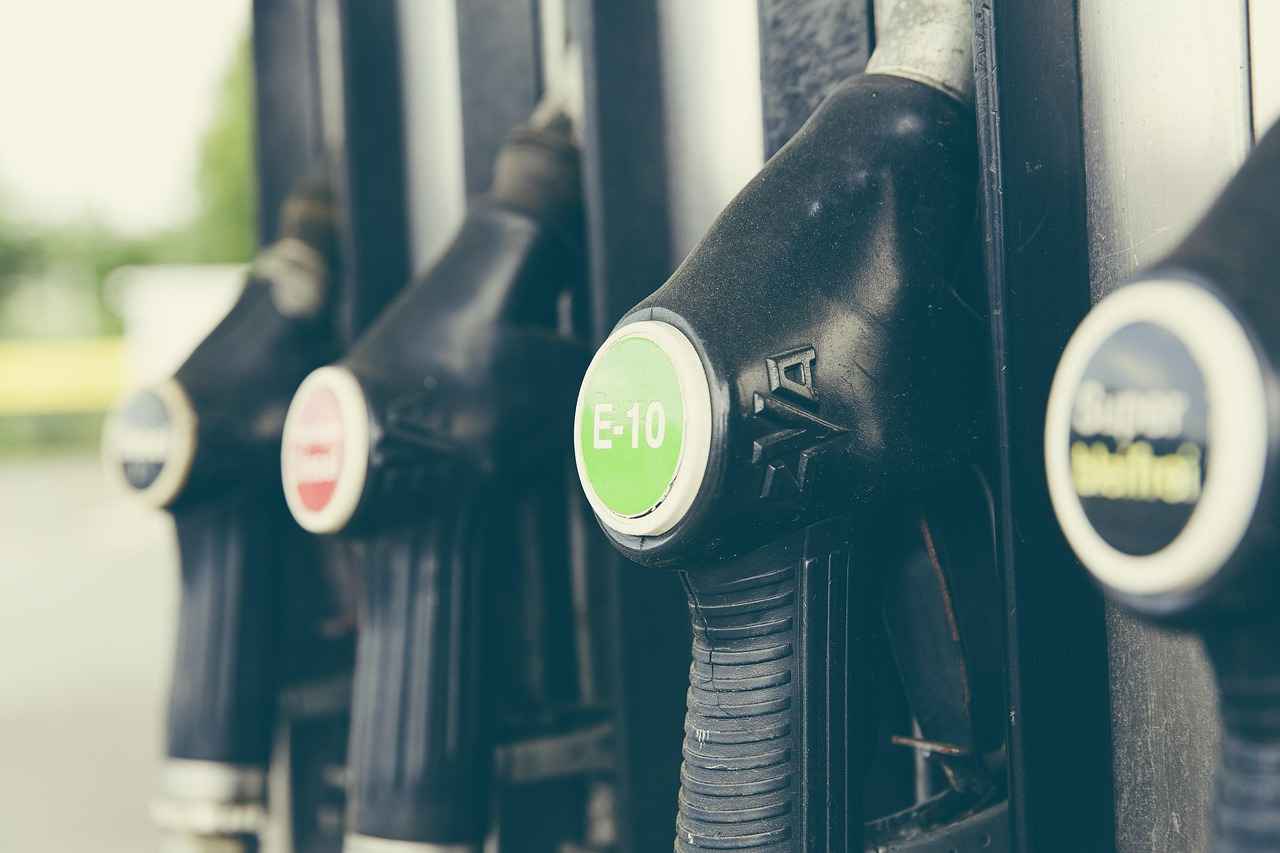
How to Clean the Rust from the Gas Tank?
Cleaning a rusty gas tank is an essential task for any vehicle owner concerned about performance and longevity. A gas tank that is plagued by rust not only affects fuel efficiency but can also lead to significant engine problems. In this guide, we will explore a comprehensive step-by-step process for effectively cleaning rust from your gas tank, ensuring that your vehicle runs smoothly.
Rust in a gas tank can cause fuel contamination, leading to engine misfires and reduced performance. If left unchecked, rust can flake off and clog fuel lines, injectors, and filters, resulting in costly repairs. Regular cleaning is crucial to maintain optimal fuel flow and protect the integrity of your vehicle’s engine.
Before diving into the cleaning process, it’s vital to gather all the necessary tools and materials. This preparation minimizes interruptions and ensures a more efficient cleaning experience. Here’s a list of what you’ll need:
- Wrenches for tank removal
- Brushes (wire and soft) for scrubbing
- Protective gear such as gloves, goggles, and masks
- Cleaning solutions like vinegar, baking soda, or commercial rust removers
- Rags for drying and wiping
Proper preparation is key to a successful cleaning process. Begin by draining the gas tank completely. This step is crucial to avoid any fire hazards. Once drained, remove the tank from the vehicle and inspect it for any visible damage. This initial inspection helps identify areas that may require extra attention during the cleaning process.
The cleaning process involves several steps to effectively remove rust and debris. Following a systematic approach can yield the best results for your gas tank. Here’s how to do it:
Fill the tank with your chosen cleaning solution. If using vinegar, a mixture of vinegar and water can be quite effective. Allow the solution to soak for several hours or overnight, depending on the severity of the rust.
After soaking, use a wire brush to scrub the interior surfaces of the tank. Be sure to reach all corners and crevices where rust may have accumulated. For stubborn rust spots, a combination of a soft brush and a more abrasive scrubber may be necessary.
Once you’ve scrubbed the tank, it’s essential to rinse it thoroughly with clean water. This step removes any remaining rust particles and cleaning solution. Ensure that the tank is completely dry before reinstallation to prevent new rust from forming.
After cleaning, conduct a thorough inspection of the gas tank. Look for any signs of remaining rust or damage. If you notice any significant issues, consider seeking professional help or using a rust-inhibiting sealant to protect the tank.
To keep your gas tank in optimal condition, it’s important to implement preventive measures. Store your tank in a dry, ventilated area to minimize moisture exposure. Additionally, regular inspections and maintenance can help catch any rust before it becomes a major issue.
Routine maintenance, such as fuel system cleaning and timely inspections, plays a crucial role in preventing rust. By staying proactive, you can ensure that your gas tank remains in excellent condition, ultimately saving you time and money in the long run.
Step-by-Step Cleaning Process
Cleaning a rusty gas tank may seem daunting, but employing a can make the task manageable and efficient. This methodical approach not only simplifies the cleaning procedure but also ensures that every corner of the tank is addressed, leading to optimal results. Below, we outline a comprehensive guide to effectively clean your gas tank.
Before diving into the cleaning process, it is essential to gather all necessary materials. This includes:
- Cleaning Solutions: Options like vinegar, baking soda, or specialized rust removers.
- Tools: Wrenches, brushes, and scrapers.
- Safety Gear: Gloves, goggles, and masks to protect against harmful fumes.
Before you start cleaning, make sure to prepare the gas tank properly:
1. Drain all fuel from the tank.2. Remove the tank from the vehicle.3. Inspect the tank for any visible damage or leaks.
Once the tank is prepared, the next step is to soak it in your chosen cleaning solution. Here’s how:
- Fill the tank with the cleaning solution, ensuring it reaches all rusted areas.
- Let it soak for several hours or overnight, depending on the severity of the rust.
After soaking, it’s time to scrub:
- Use a long brush to reach into the tank and scrub the interior surfaces.
- Focus on areas with heavy rust buildup, applying extra pressure as needed.
Once scrubbing is complete, rinsing is crucial:
- Empty the cleaning solution from the tank.
- Rinse the tank with clean water multiple times to remove any remaining residue.
After rinsing, conduct a thorough inspection:
- Look for any remaining rust spots or debris.
- If necessary, repeat the soaking and scrubbing process to ensure a clean surface.
Proper drying is essential to prevent future rust:
- Allow the tank to air dry completely.
- Consider using a heat gun or hairdryer to speed up the process, but be cautious of high temperatures.
To protect your cleaned tank from future rust:
- Consider applying a rust inhibitor or sealer to the interior surface.
- This preventive measure can significantly extend the life of your gas tank.
By following this , you can restore your rusty gas tank effectively, ensuring your vehicle runs smoothly and efficiently. Regular maintenance and inspections will further help in preventing rust buildup in the future.
Post-Cleaning Inspection: What to Look For?
After you have meticulously cleaned your gas tank, it is essential to conduct a thorough post-cleaning inspection. This step is often overlooked but is crucial for ensuring the longevity and reliability of your vehicle’s fuel system. Here are some key aspects to focus on during your inspection:
- Check for Remaining Rust: Even after cleaning, some rust may linger. Inspect the interior surfaces of the tank closely, looking for any signs of rust that could lead to future complications.
- Examine for Leaks: After cleaning, it’s vital to check for any leaks that may have developed. Inspect the seams and welds of the tank, as these areas are often prone to corrosion.
- Assess the Condition of the Fuel Lines: Ensure that the fuel lines connected to the tank are intact and free from any cracks or damage. Damaged lines can lead to fuel leaks and engine issues.
- Inspect the Fuel Pump: If your vehicle has a fuel pump located within or near the gas tank, check its condition. A malfunctioning fuel pump can hinder performance and lead to costly repairs.
- Look for Sediment or Debris: After cleaning, ensure that there is no remaining sediment or debris inside the tank. This can clog filters and injectors, leading to poor engine performance.
- Check the Tank’s Exterior: Don’t forget to examine the outside of the gas tank. Look for any signs of rust or damage that may not have been addressed during the cleaning process.
Identifying issues early can help prevent more significant problems down the road. For instance, if you notice any remaining rust, it may be necessary to treat it with a rust inhibitor or perform additional cleaning. Regular inspections of your gas tank can also help you catch potential issues before they escalate into costly repairs.
Additionally, consider the importance of maintaining a clean fuel system. A clean gas tank contributes to a healthier engine and can improve fuel efficiency. To ensure that your vehicle operates at its best, incorporate routine checks of the gas tank into your regular maintenance schedule.
In summary, a thorough post-cleaning inspection of your gas tank is essential for identifying any lingering issues that could affect your vehicle’s performance. By being proactive and attentive during this stage, you can ensure a reliable fuel system and extend the life of your gas tank.
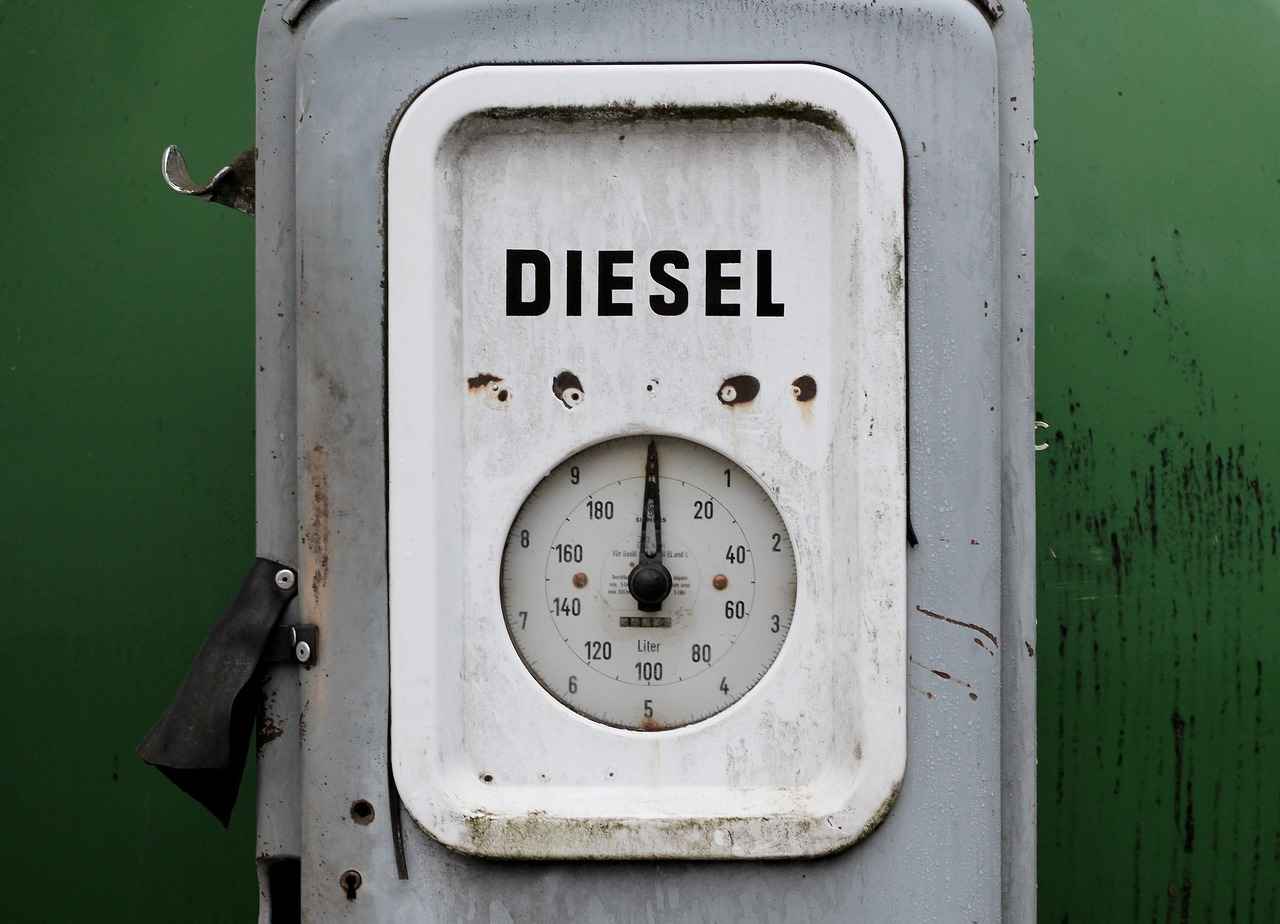
How to Prevent Future Rust Buildup?
Preventing rust buildup is essential for maintaining a clean gas tank. Rust not only compromises the integrity of the tank but can also lead to serious issues within your vehicle’s fuel system. This article will explore effective strategies to minimize rust formation, ensuring your gas tank remains in optimal condition.
Rust can accumulate over time due to moisture exposure and fuel degradation, leading to fuel contamination and mechanical failures. By proactively preventing rust, you can avoid costly repairs and ensure that your vehicle runs smoothly. Understanding the risks associated with rust is the first step in effective prevention.
- Store in a Dry Environment: Ensure that your gas tank is kept in a dry, well-ventilated area. Moisture is one of the primary contributors to rust formation.
- Avoid Direct Ground Contact: Place your gas tank on a pallet or shelf to prevent it from sitting directly on the ground, which can trap moisture.
- Seal Openings: Make sure that all openings are securely sealed to prevent water ingress.
Regular maintenance is crucial for preventing rust buildup. Implementing a routine check can help catch potential issues early. Here are some effective maintenance practices:
- Inspect for Leaks: Regularly check your gas tank for any signs of leaks or corrosion. Early detection can save you from larger problems down the line.
- Use Fuel Additives: Consider using fuel stabilizers or additives that can help prevent rust and corrosion within the tank.
- Keep the Tank Full: Keeping your gas tank filled reduces the amount of air (and moisture) inside, thereby decreasing the chances of rust formation.
In addition to storage and maintenance, cleaning your gas tank periodically can significantly reduce rust buildup. Here are some recommended cleaning techniques:
- Use a Rust Remover: Applying a rust remover solution can help dissolve existing rust and prevent new rust from forming.
- Regularly Flush the Tank: Flushing the tank with clean fuel or a cleaning solution can help remove debris and moisture that may contribute to rust.
- Dry Thoroughly: After cleaning, ensure that the tank is completely dry before sealing it to prevent moisture retention.
Monitoring your gas tank for signs of rust is a proactive approach to maintenance. Here are some signs to watch for:
- Visual Inspections: Look for any discoloration or flaking on the tank’s surface.
- Fuel Quality: If you notice changes in fuel quality, such as a rusty appearance or sediment, it may indicate a rust issue.
- Performance Issues: Engine performance problems can also signal rust-related complications within the fuel system.
By implementing these preventive measures, you can significantly reduce the likelihood of rust buildup in your gas tank. Regular maintenance, proper storage, and timely cleaning are essential practices that contribute to the longevity and performance of your vehicle.
Storage Tips for Gas Tanks
Proper storage conditions are essential for maintaining the integrity of your gas tank and minimizing rust formation. Rust not only compromises the tank itself but can also lead to more serious engine issues down the line. Here are some key storage tips to ensure your gas tank remains in optimal condition:
- Choose a Dry Environment: Always store your gas tank in a dry area. Moisture is one of the primary contributors to rust formation. A damp environment can accelerate the oxidation process, leading to rust buildup.
- Ensure Good Ventilation: Storing your gas tank in a well-ventilated area helps to disperse any moisture that may accumulate. Air circulation is crucial in preventing condensation from forming inside the tank.
- Avoid Direct Sunlight: While it’s important to keep the tank dry, it’s equally important to avoid exposing it to direct sunlight. Prolonged exposure to heat can cause the materials of the tank to degrade, increasing the likelihood of rust.
- Use a Protective Cover: If possible, cover your gas tank with a breathable tarp or cover. This can offer an additional layer of protection against moisture while allowing air to circulate.
- Inspect for Leaks: Before storing your gas tank, check for any leaks or cracks. Even small openings can allow moisture to enter, leading to rust formation. If you find any damage, consider repairing it before storage.
- Keep Away from Chemicals: Store your gas tank away from any chemicals that could potentially corrode the metal. This includes cleaners, solvents, or other substances that may emit vapors.
- Regular Maintenance: Make it a habit to periodically check on your gas tank even while in storage. This includes looking for signs of rust or corrosion and ensuring that the storage conditions remain optimal.
By following these storage tips, you can significantly reduce the risk of rust formation on your gas tank, ensuring that it remains functional and safe for your vehicle’s fuel system. Remember, a little preventive care goes a long way in extending the life of your gas tank and maintaining the overall health of your vehicle.
Regular Maintenance Practices
play a crucial role in ensuring the longevity and efficiency of your gas tank. By implementing a few simple yet effective strategies, you can significantly reduce the risk of rust buildup and maintain optimal fuel system performance. This section delves into various maintenance practices that every vehicle owner should consider.
Regular maintenance is not just a good habit; it’s a necessity for vehicle health. Neglecting routine care can lead to severe issues such as fuel contamination, engine performance problems, and costly repairs. By prioritizing maintenance, you can avoid these pitfalls and ensure a smooth driving experience.
- Fuel System Cleaning: Regularly cleaning your fuel system helps remove deposits and contaminants that can accumulate over time.
- Inspections: Conducting periodic inspections allows you to identify any potential issues before they escalate into major problems.
- Fuel Quality Checks: Using high-quality fuel can prevent rust and other issues that arise from poor-quality gasoline.
The frequency of maintenance can vary based on usage and environmental conditions. However, a general rule of thumb is to conduct a thorough inspection and cleaning at least once a year. For vehicles that are frequently exposed to moisture or harsh conditions, more frequent checks may be necessary.
Having the right tools on hand is essential for effective maintenance. Here are some tools you might need:
- Wrenches: For removing the gas tank and other components.
- Brushes: To scrub away rust and debris.
- Protective Gear: Gloves, goggles, and masks are vital for safety during maintenance tasks.
To maintain optimal performance, consider the following practices:
- Regular Fuel Additives: Use fuel additives designed to clean the fuel system and prevent rust.
- Drain Water from the Tank: Water accumulation can lead to rust; ensure to drain any water from the tank periodically.
- Store Fuel Properly: If storing fuel, use airtight containers and keep them in a cool, dry place to minimize moisture exposure.
Being aware of the signs of a rusty gas tank can help you take action before it leads to significant issues. Look out for:
- Fuel Leaks: Any signs of leaking fuel beneath your vehicle can indicate a problem.
- Fuel Contamination: If your fuel appears cloudy or has particles, it may be contaminated due to rust.
- Engine Performance Issues: Difficulty starting or poor acceleration can be a sign of fuel system problems caused by rust.
In conclusion, routine maintenance is vital for preventing rust and ensuring your gas tank remains in optimal condition for years to come. By following the practices outlined above, you can safeguard your vehicle’s fuel system and enhance its performance, ultimately leading to a more enjoyable driving experience.
Frequently Asked Questions
- How often should I clean my gas tank?
It’s a good idea to check and clean your gas tank at least once a year, especially if you notice rust or sediment buildup. Regular maintenance helps keep your fuel system running smoothly.
- Can I use vinegar to clean my gas tank?
Absolutely! Vinegar is a natural rust remover and can be very effective. Just make sure to rinse it thoroughly afterward to prevent any residue from affecting your fuel.
- What if my gas tank has a lot of rust?
If the rust is extensive, it might be best to consult a professional. However, following a thorough cleaning process can often restore a rusty tank to good condition.
- Is it safe to clean a gas tank at home?
Yes, as long as you take the proper safety precautions. Always wear protective gear and work in a well-ventilated area to avoid any harmful fumes.
- How can I prevent rust from forming in my gas tank?
To prevent rust, keep your gas tank full to minimize moisture exposure, store it in a dry place, and perform regular maintenance checks on your fuel system.

